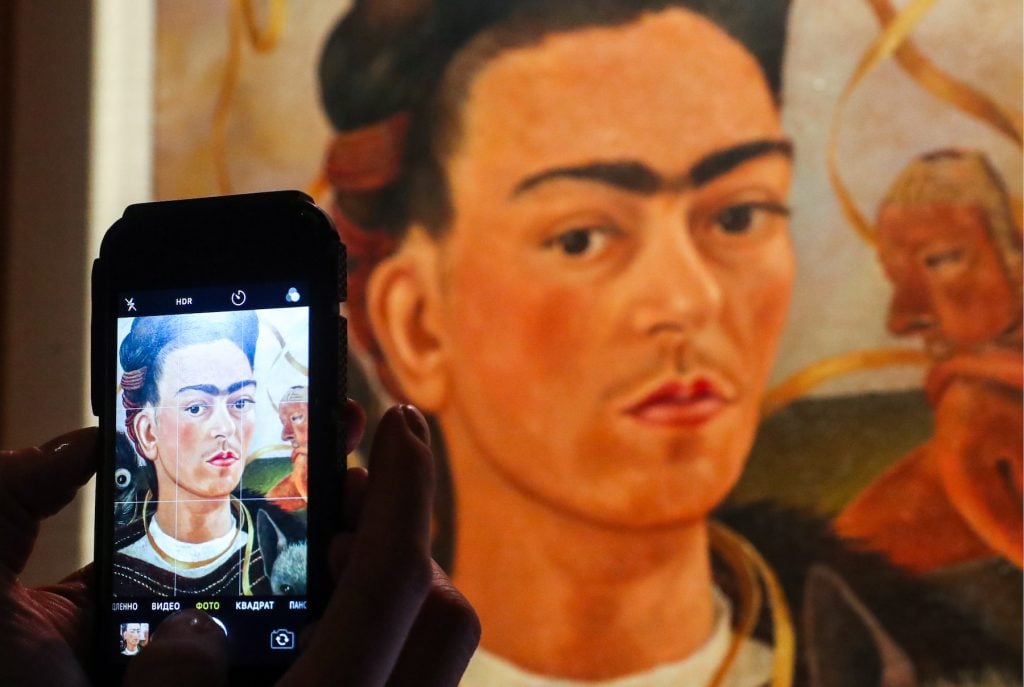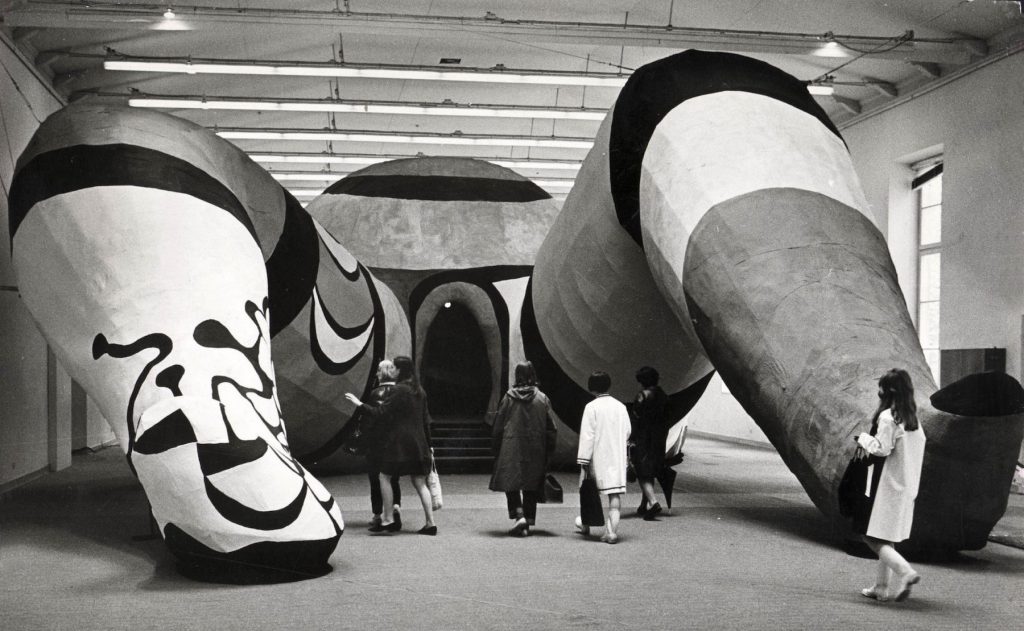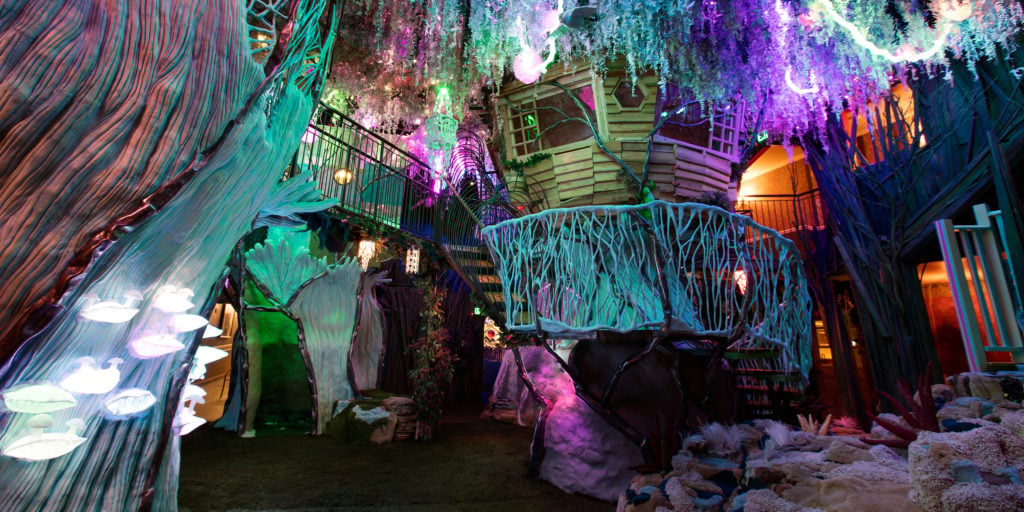Curiosities
Why’s Frida Kahlo’s Family Dismantling Her House for an NFT? Did ‘Succession’ Dis the Shed? + Other Questions I Have About the Week’s Art News
Plus, what happens to the ConstitutionDAO's crypto now?

Plus, what happens to the ConstitutionDAO's crypto now?

Ben Davis

Curiosities is a column where I comment on the art news of the week, sometimes about stories that were too small or strange to make the cut, sometimes just giving my thoughts on the highs and lows.
Below, some questions posed by the events of the last week…
Miami art week is upon us, promising to be particularly maniacal this year with the onset of foaming-at-the-mouth NFT fever. I could spend all day recounting the barrage of off-the-wall NFT events I’m being hit with and not even make a dent in the pile. Let’s just focus on one: The “digital asset company” Ezel.life is selling off of an actual piece of Frida Kahlo’s family home, the Casa Roja (or Red House), as an NFT.
You can confirm that this is true starting tonight in the heart of the Miami Beach action at the Sagamore Hotel. The Ezel event is being advertised as the “soft launch” of “an exclusive partnership” with Frida’s family, which will culminate in the creation of the “Frida Kahlo and Family Metaverse” in Q2 of next year, according to a product road map.
Mara Romeo, Frida’s great-great-niece, is on board with the project—though, nota bene, Romeo has been involved in some very complex litigation over who has the rights to commercialize Frida’s name and likeness in the past. Romeo objected to a Frida Kahlo Barbie as violating the artist’s spirit. Then, the Panama-based company that controls Kahlo licensing counter-sued Romeo, saying she herself didn’t have the right to sell her own Kahlo merch. The suit was dismissed in Florida in September, according to ARTnews.
“We’re taking a brick out of the Red House,” Romeo enthuses in a video Ezel.life has put out. “This brick will be the foundation of the metaverse that is meant to recreate the house and replicate it, to give you all access to it through this new digital world, to the secrets of the family, to the secrets of Frida Kahlo.”
It then shows footage of a workman literally extracting the actual brick from the structure, prying it loose from beneath a beam, evidently to be put on display in Miami.
A press release explains, “The physical brick and its NFT connect the foundation of the red house in the physical world with the metaverse in the digital world.” I don’t know exactly what that means, in reality—but as metaphor, it’s a bit on the nose, don’t you think? You know, undermining the foundation of Frida Kahlo’s legacy and all?
If you like art and watch HBO’s upper-middle-brow media-dynasty soap Succession, you probably were as amused as I was to see the Shed make an appearance on Sunday’s ep. It featured as the venue for the 40th birthday festivities of Kendall Roy, the rebellious scion of the Roys, the fake Murdoch clan of the series. (Kendall’s real-life analogue, James Murdoch, bought a controlling interest in Art Basel’s parent group last year, incidentally, so it’s topical!)
In explaining the decision to place the set-piece party at the Shed, production designer Stephen Carter told Thrillist that he had originally imagined it at the Clark Art Institute, but thought better. In what amounts to one heck of a back-handed complement for the Shed, given Kendall’s characterization as a rich kid whose desperation to be loved and delusions of grandeur keep getting in the way of his better impulses, Carter explained that it felt like the more authentic venue: “He’s that sort of Hudson Yards kind of guy.”
Some other art tidbits: if you thought the entrance to the party, where guests entered through a pink tunnel representing Roy’s mother’s vagina, reminded you of the famous statue Hon (She), by Niki de Saint Phalle (whose work was on view at PS1 during the filming of Season 3), you are probably right. The tunnel was meant to be flanked by two 25-foot-long inflatable women’s legs—you just don’t see them in the final cut.

People walk into Niki de Saint-Phalle’s giant sculpture She at the Museum of Modern Art in Stockholm, Sweden. Photo by Arne Scweiz/Scanpix Sweden, AFP via Getty Images.
The set-piece tree house was inspired by Santa Fe experience art collective Meow Wolf: “the idea was that as you approach the treehouse it feels a little bit like one of their constructions meets sort of theme park version of the treehouse, but when you go inside it’s actually much more clubby,” Carter explained.

Meow Wolf, House of Eternal Return. Photo by Kate Russell, courtesy of Meow Wolf.
Parts of the party were actually filmed in the Shed; others, like the “Compliment Tunnel” that guests walked through to receive compliments from attendants hidden in the walls, were done on a soundstage. The lighting was inspired by Kanye West’s Life of Pablo tour. Theme ideas actually came from the mind of Jeremy Strong, the actor who plays Kendall—though one of his favorites, a room featuring “Fucked Up Enya,” did not make the cut.
Because satire is dead, there is, of course, an article out there about “How to do Manhattan Like a Roy from HBO’s ‘Succession,’” broken into “Stay,” “Eat,” and “Do” categories. (Want to “Do” NYC like Kendall? The article suggests you see “DRIFT: Fragile Future” at the Shed.) So I wouldn’t be surprised if the satirical party heralded what was actually in store for the Shed. What better use of its signature “Bloomberg Building” than rich guy birthday rentals?
I’ve already written enough about the ConstitutionDAO’s failed bid to buy a copy of the U.S. Constitution at Sotheby’s, where over 17,000 people pooled their cryptocurrency to tilt at the giants of the collectible documents market.
One thing that perhaps wasn’t stressed enough is how quickly the high-minded rhetoric of the DAO turned into talk of financial speculation. Originally, the pitch to the public was all about claiming the document “for the people” and finding a public-minded institution for it, so that it would not be hidden away by a billionaire.
But on the Twitter livestream after the sale, when the DAO’s lead group still thought they had successfully purchased the document, chatter had already pivoted to potential “high profits for the governance tokens,” teasing DAO participants with the potential upside of flipping the “$People” tokens they had purchased, which allowed them to vote on where the Constitution ended up.
In any case, the DAO lost the bid. The subsequent week turned into a clusterfuck as the core group tried to wrestle with the many uncharted problems of this crypto-powered form of crowd finance. It turned out that the “gas fees” involved in getting a refund in the Ethereum economy eat up more value than many people put in.
And yet, for some, there was still possibility.

Dylan Goldberg and Katie Rothstein. Photo courtesy Crypto Girls.
Specifically, for Katie Rothstein, former Artnet News writer and social media manager, who wasn’t sure exactly how she was going to reclaim the $250 she had put in to participate in the viral ConstitutionDAO. But over the weekend, opportunity struck as the DAO released the tokens for trading on secondary exchanges, where they immediately surged up to 25 times the original price.
“My friend noticed and texted me so I sprinted home and pulled out. I hadn’t touched it or claimed my refund so I was able to claim my $People, convert it into $5,500 of Ethereum, which I then sold and transferred to my bank minus gas fees for $5,300,” Rothstein wrote. “I’m freaking out!” (Rothstein has just started a podcast with Dylan Goldberg called “Crypto Girls,” about crypto investing, and you can hear her talk about the saga more in their new episode.)
The $People price has already gone down again. Following the speculative spike, the ConstitutionDAO group itself was compelled to issue a statement reminding everyone that $People tokens were essentially useless:
Having lost the auction and following the core team’s choice to wind down, we would like to remind you that the tokens possess no rights, governance, or utility other than redeeming them for ethereum from the smart contract held in Juicebox at a ratio of 1,000,000:1—the same ratio at which contributions were made to the initial crowdfund to buy the Constitution.
As Rothstein said, “This crypto shit is so crazy.”